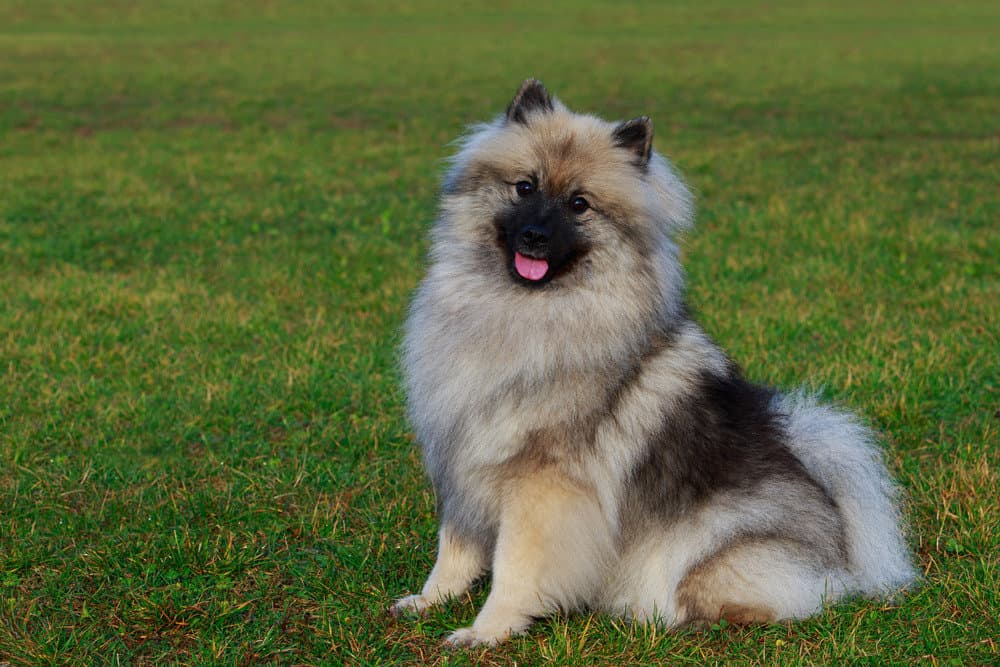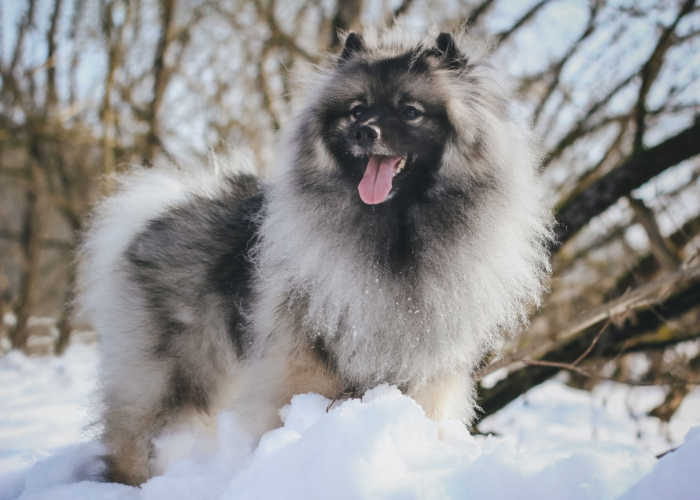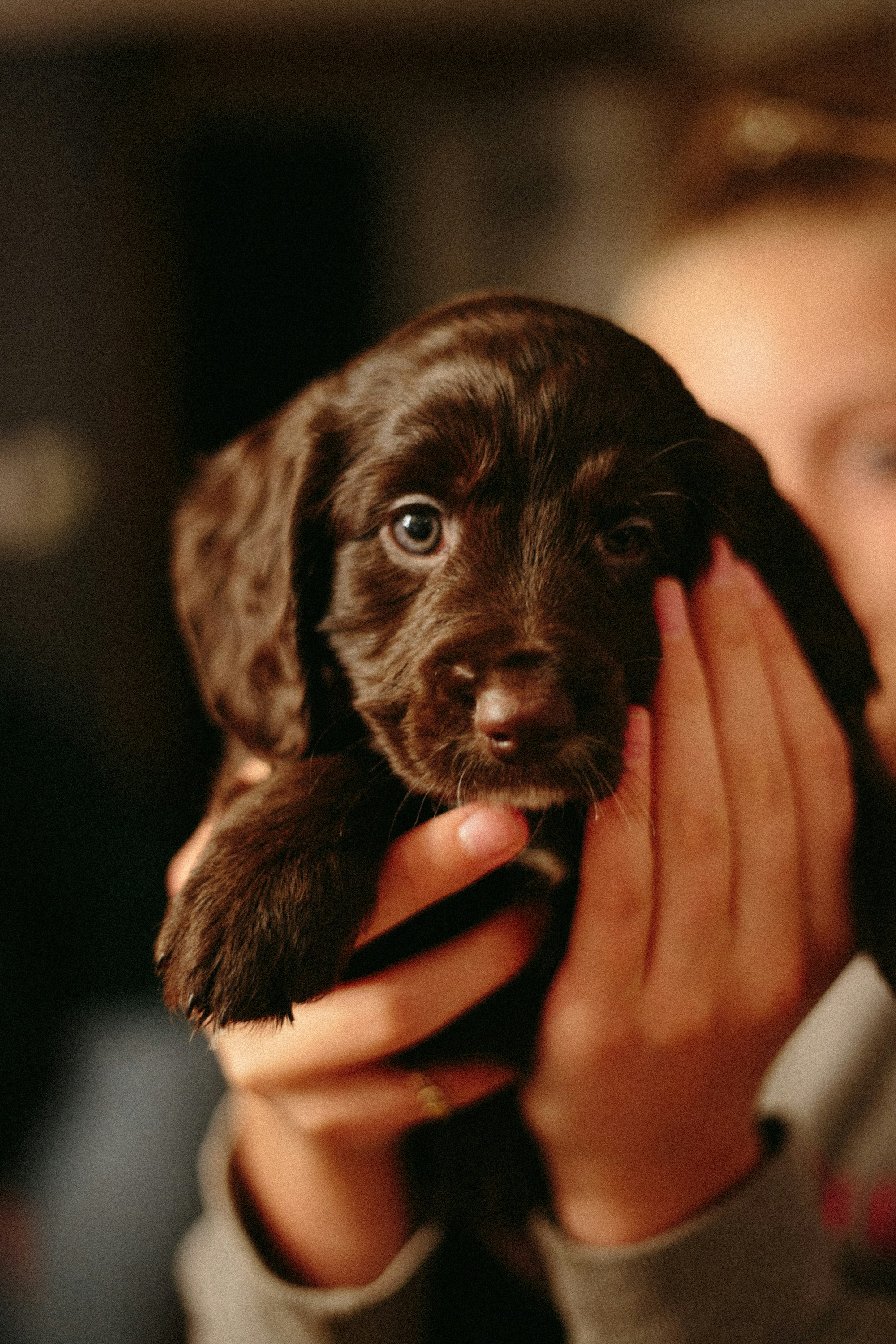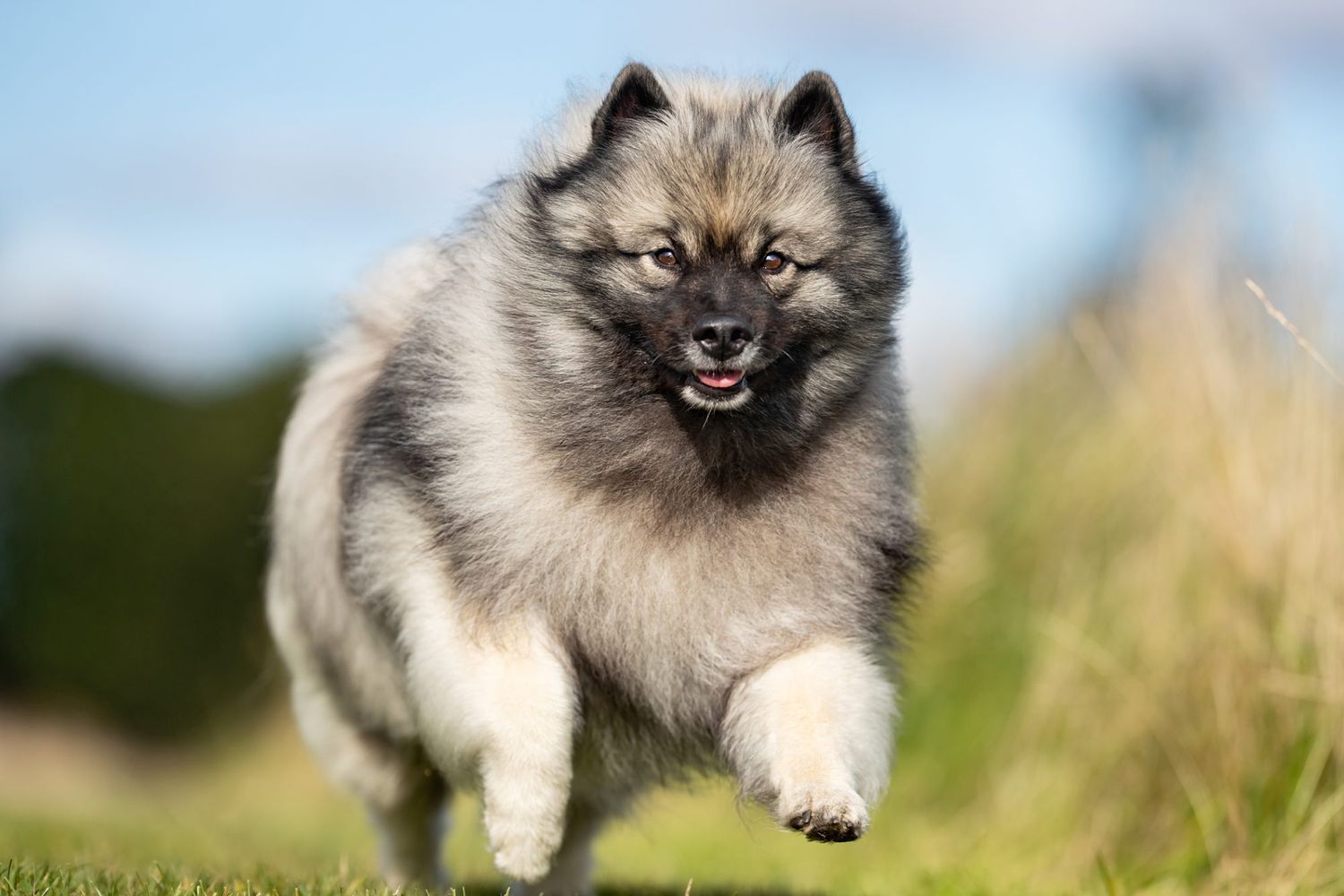Are you in search of a furry companion that combines intelligence, loyalty, and charm? Look no further than the captivating Keeshond. This breed, known for its luxurious coat and expressive eyes, has won the hearts of dog enthusiasts worldwide. In this article, we'll delve into the history, characteristics, care, and unique qualities of the Keeshond, shedding light on why it's a beloved choice for both families and individuals.

Historical Background of the Keeshond
The Keeshond, named after the 18th-century Dutch patriot Kees de Gyselaer, was originally bred as a watchdog and companion on barges and riverboats. Their loyalty and alert nature made them ideal for guarding valuable cargo and providing companionship to sailors.
Distinctive Characteristics of the Keeshond
When it comes to distinctiveness, the Keeshond certainly stands out from the crowd. With its fox-like expression and luxurious double coat, this breed exudes an air of elegance and charm. Let's delve into some of the most notable characteristics that set the Keeshond apart:
1. Luxurious Double Coat: The Keeshond's coat is a true masterpiece of nature. It consists of two layers: a soft, dense undercoat and a longer, harsher outer coat that forms a magnificent ruff around the neck. This double coat serves as protection against various weather conditions and gives the Keeshond its signature regal appearance.
2. Expressive Eyes: The Keeshond's almond-shaped eyes are as expressive as they are captivating. They radiate intelligence, warmth, and a hint of mischievousness, making it easy to see why these dogs form such strong bonds with their human companions.
3. Plumed Tail: One cannot help but admire the Keeshond's plumed tail that gracefully curves over its back. The tail is a constant source of motion, reflecting the breed's lively and animated nature. It's also a part of the Keeshond's communication toolkit, expressing emotions from joy to curiosity.

4. Unique Color Variations: Keeshonds come in a range of eye-catching colors, including shades of gray, black, and cream. These color variations, often complemented by distinct markings and patterns, contribute to the breed's captivating and photogenic presence.
5. Weight and Height: Keeshonds are medium-sized dogs with a distinctive and elegant appearance. Their weight and height fall within a specific range, contributing to their balanced and graceful proportions:
Weight Range
Adult male Keeshonds typically weigh between 35 to 45 pounds (15.8 to 20.4 kilograms), while adult female Keeshonds generally weigh slightly less, ranging from 30 to 40 pounds (13.6 to 18.1 kilograms). It's important to note that individual dogs may fall outside of these ranges based on factors such as genetics, diet, and activity level.
Height Range
In terms of height, adult male Keeshonds typically stand around 18 to 19 inches (45.7 to 48.3 centimeters) at the shoulder. Adult female Keeshonds usually measure slightly shorter, standing between 17 to 18 inches (43.2 to 45.7 centimeters). These measurements contribute to their well-balanced and compact build.
The Keeshond's Playful and Gentle Temperament
Beyond its striking appearance, the Keeshond is renowned for its heartwarming personality and temperament. If you're seeking a four-legged friend that seamlessly blends playfulness with gentleness, look no further than the Keeshond:
Affectionate Companionship: Keeshonds thrive on human interaction and are devoted to their families. Their affectionate nature means they're always ready for cuddles, belly rubs, and heartwarming moments that remind us of the special bond between dogs and humans.
Playful Spirit: From puppyhood through adulthood, the Keeshond retains a youthful exuberance that adds a touch of joy to everyday life. Fetch, tug-of-war, and interactive games are all on the menu for this breed, making them a perfect playmate for kids and adults alike.
Gentle Disposition: While their playful antics are endearing, the Keeshond also possesses a gentle and sensitive side. They are attuned to the emotions of their human companions and are often known to offer comfort during times of sadness or stress.
Social Butterfly: The Keeshond's social nature extends beyond their immediate family. They tend to get along well with other dogs and, with proper socialization, can form friendly relationships with new faces – whether they're two-legged or four-legged.

Caring for Your Keeshond: Diet and Exercise
Ensuring the health and vitality of your Keeshond involves a combination of a balanced diet and regular exercise. These elements work hand in paw to promote overall well-being and a happy, active life for your furry companion:
Nutritional Needs
Providing your Keeshond with a high-quality, nutritionally balanced diet is essential. Look for dog food that lists real meat as the primary ingredient and is free from artificial additives. Consult your veterinarian to determine the appropriate portion size and feeding schedule based on your dog's age, weight, and activity level.
Hydration
Access to fresh, clean water is crucial at all times. Hydration plays a vital role in maintaining your Keeshond's health, aiding digestion, regulating body temperature, and ensuring proper organ function.
Regular Exercise
Keeshonds are energetic and playful dogs that require regular exercise to keep them physically and mentally stimulated. Daily walks, interactive play sessions, and engaging activities such as agility training can help prevent boredom and promote a healthy weight.
Mental Stimulation
In addition to physical exercise, mental stimulation is essential for your Keeshond's well-being. Puzzle toys, treat-dispensing toys, and training sessions challenge their cognitive abilities and prevent behavioral issues stemming from boredom.
Grooming the Luxurious Keeshond Coat
The Keeshond's stunning double coat adds to its allure but requires regular grooming to keep it looking its best. Here's a guide to maintaining that luxurious coat and promoting overall cleanliness:
Brushing Routine
Regular brushing is a must to prevent matting, reduce shedding, and distribute natural oils throughout the coat. Aim to brush your Keeshond's fur several times a week, paying close attention to the dense undercoat and the longer outer coat. This not only keeps the coat healthy but also strengthens the bond between you and your furry friend.
Bathing
Keeshonds generally do not require frequent baths unless they get exceptionally dirty or start to emit an odor. When bathing is necessary, use a mild dog shampoo for sensitive skin to maintain the coat's natural oils. Be sure to thoroughly rinse and dry your Keeshond after bathing to prevent skin issues.

Ears and Eyes
Regularly check and clean your Keeshond's ears to prevent infections. Use a damp cotton ball to gently wipe the ear's outer folds. Additionally, keep an eye on the eyes – their expressive beauty needs no enhancement, but a quick wipe with a damp cloth can help remove any debris.
Nail Care
Trimming your Keeshond's nails every few weeks is essential to prevent discomfort and potential injury. If you're unsure about nail trimming, consult a professional groomer or veterinarian for guidance.
Dental Health
Maintaining good oral hygiene is vital for your Keeshond's overall health. Brush their teeth regularly with a dog-friendly toothbrush and toothpaste, and provide dental treats or toys to help keep their teeth clean.
Training Your Keeshond: Harnessing Their Intelligence
The Keeshond's sharp intellect and eagerness to please make training an enjoyable and rewarding experience for both you and your furry friend. Here's how to harness their intelligence and shape them into a well-mannered and obedient companion:
Positive Reinforcement: Keeshonds respond exceptionally well to positive reinforcement training. Use treats, praise, and affection to reward desired behaviors, such as sitting, staying, and coming when called. This not only motivates them to learn but also strengthens the bond between you.
Consistency and Patience: Consistency is key when training your Keeshond. Use clear and concise commands, and be patient as they learn new skills. Short training sessions that end on a positive note are more effective than long, overwhelming sessions.
Mental Challenges: Challenge your Keeshond's mind with various training activities and games. Teach them tricks, engage in interactive play, and introduce puzzles that require problem-solving. Mental stimulation is just as important as physical exercise.
Socialization: Expose your Keeshond to different people, environments, and situations from an early age. This helps them develop into confident and well-adjusted adults. Enroll them in puppy classes and arrange playdates with other dogs to promote positive social interactions.

Socializing Your Keeshond: A Friendly Companion
The Keeshond's friendly and sociable nature makes them a delightful companion for both humans and other dogs. Here's how to ensure they grow up to be confident, well-mannered, and socially adept:
Early Exposure: Begin socialization during the critical puppyhood stage. Introduce your Keeshond to various people, including children, and let them experience different environments, sounds, and sensations. This builds a foundation of positive associations and reduces the likelihood of fear or aggression later in life.
Puppy Classes: Enroll your Keeshond in puppy training classes where they can interact with other puppies and learn basic commands in a controlled environment. These classes provide valuable opportunities for supervised play and socialization.
Dog Parks and Playdates: Regular visits to dog parks and playdates with well-mannered dogs expose your Keeshond to a diverse range of canine personalities. This helps them develop strong social skills and teaches them how to communicate effectively with their furry peers.
Positive Experiences: Make every social interaction a positive experience for your Keeshond. Reward them with treats, praise, and affection when they exhibit calm and friendly behavior around people and other dogs.
Supervision and Guidance: While socializing your Keeshond, closely supervise their interactions and step in if any situation becomes overwhelming. Provide guidance and reassurance to help them navigate new experiences with confidence.
Health Considerations for Keeshonds
Maintaining your Keeshond's health is a top priority to ensure a long and happy life. While they are generally robust dogs, there are a few health considerations to be aware of:
Regular Veterinary Check-ups
Schedule regular visits to the veterinarian for check-ups and vaccinations. Your vet can detect potential health issues early and provide guidance on preventative measures.
Hip Dysplasia
Keeshonds can be prone to hip dysplasia, a condition where the hip joint doesn't develop properly. Providing a balanced diet, maintaining a healthy weight, and avoiding excessive jumping can help reduce the risk.
Eye Health
Monitor your Keeshond's eyes for signs of irritation or infection. They can be susceptible to conditions like progressive retinal atrophy (PRA) that may lead to vision loss.
Autoimmune Disorders
Be vigilant for any signs of autoimmune disorders, as Keeshonds can be genetically predisposed. Regular exercise, a nutritious diet, and stress management contribute to a strong immune system.
Keeshond-Proofing Your Home: Tips and Tricks
Creating a safe and comfortable environment for your Keeshond is essential to prevent accidents and promote their well-being. Here's how to "Keeshond-proof" your home:
Secure Hazardous Items: Keep household cleaners, chemicals, and small objects out of reach. Keeshonds are curious and may investigate items that could be harmful if ingested.
Provide Chew Toys: Offer a variety of safe and durable chew toys to satisfy your Keeshond's natural urge to chew. This helps prevent them from chewing on furniture or belongings.
Designate a Rest Area: Set up a cozy and quiet space where your Keeshond can rest and relax. This gives them a safe retreat and helps reduce stress.
Check Fencing: If you have a yard, ensure the fencing is secure and tall enough to prevent escape. Keeshonds have a playful nature and may attempt to explore.
Keeshond's Role in Therapy and Assistance
The Keeshond's empathetic nature and gentle disposition make them well-suited for therapy and assistance roles:
Emotional Support: Keeshonds excel at providing emotional support to individuals facing challenges. Their presence and affection can offer comfort and companionship.
Therapy Dogs: Their friendly demeanor makes them ideal candidates for therapy work in hospitals, nursing homes, and rehabilitation centers. Their interactions can bring joy and comfort to those in need.

Choosing a Keeshond Puppy: What to Look For
When selecting a Keeshond puppy, consider these factors to ensure a happy and healthy addition to your family:
Reputable Breeder: Choose a breeder with a good reputation and a focus on the health and well-being of their dogs. Ask about health clearances and the puppy's lineage.
Socialization: Observe how the puppy interacts with its littermates and people. A well-socialized puppy is curious, confident, and eager to engage.
Health History: Inquire about the puppy's health history and vaccinations. A responsible breeder will provide you with all necessary information.
Temperament: Look for a puppy that matches your lifestyle and preferences. Some may be more playful, while others may have a calmer demeanor.
Selecting the right Keeshond puppy sets the stage for a fulfilling and joyful companionship that will enrich your life for years to come.
The Keeshond's Role in Modern Families
In today's fast-paced world, the Keeshond continues to capture hearts as a cherished family member. Their unwavering loyalty, intelligence, and affectionate nature make them a perfect fit for households of all sizes.
Conclusion
In conclusion, the Keeshond stands out as a captivating and versatile breed, offering companionship, intelligence, and charm to those lucky enough to welcome one into their lives. By understanding their history, characteristics, care needs, and unique qualities, you can provide a loving and fulfilling life for your Keeshond.
Frequently Asked Questions (FAQs)
Q1: Are Keeshonds good with children and other pets?
- Yes, Keeshonds are generally good with children and other pets. However, early socialization is important to ensure positive interactions.
Q2: How often should I groom my Keeshond?
- Regular grooming, including brushing and occasional baths, is recommended to keep their coat healthy and free from tangles.
Q3: Do Keeshonds require a lot of exercise?
- Yes, Keeshonds are an active breed and require regular exercise to stay happy and healthy.
Q4: Are Keeshonds prone to barking excessively?
- Keeshonds are alert and protective, so they may bark to alert you of potential intruders. Proper training can help manage excessive barking.
Q5: Can Keeshonds live in apartments, or do they need a yard?
- Keeshonds can adapt to apartment living if provided with sufficient exercise and mental stimulation. However, access to a yard for playtime is beneficial.




